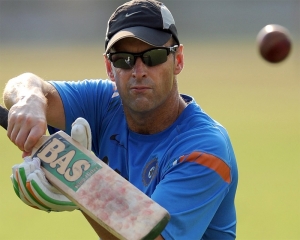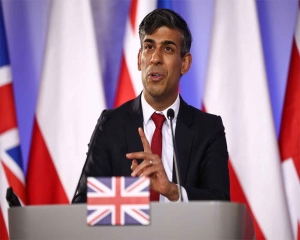The State Capital Bhubaneswar is celebrating its 76th Foundation Day today. It was on April 13, 1948 that the then Prime Minister of India, Pandit Jawaharlal Nehru, had laid the foundation stone for the city. Since then, Bhubaneswar remains a celebrated model of modern architecture and city planning with the prehistoric past as a temple city.
Before Independence, Bhubaneswar was best known as a Hindu pilgrimage centre. The Old Bhubaneswar is the original temple city which developed around the Lingaraj Temple. This zone is characterized by the presence of innumerable temple precincts and complexes and is an important zone from the aspect of religious tourism. The Lingaraj Temple is the focus of the historic town and is symbolically related with other temple complexes of the old town.
German architect and urban planner Dr Otto H Koenigsberger designed the New Capital, Bhubaneswar. Koenigsberger’s design laid the city in a linear pattern with a central artery forming the main spine to which neighbourhood units were attached. It was decided by the planners in the beginning that the new town will be grouped in self-contained neighbourhood units. This enables the town to grow without losing its community and neighbourly character. Six units were designed namely Units – I (Bapuji Nagar), II (Ashok Nagar), III (Kharavela Nagar), IV(Bhauma Nagar), V(Keshari Nagar) and VI(Ganga Nagar).
The plan envisaged horizontal development rather than vertical growth, for a population of 40,000 over an area of 16.48 km2 with a density of 10 to 12 families per acre. The town centre consisted of the market building, weekly market, daily market and bus station with a central vista leading up to Raj Bhawan and a commercial zone along Janpath and Bapuji Nagar up to Railway Station. Although the city was planned for administrative and other services as the primary functions, light industries and manufacturing activities were added after 1980. Besides, the city offers a number of advantages and employment opportunities for which there has been an influx of population. In 1951 the population of Bhubaneswar was only 16,512. In 2001 Bhubaneswar population increased to 6,48,032. The density of population per square kilometer in 1951 was only 633. This has gone up to 5,272 in 2001. The population of Bhubaneswar reached 8,37,737 as per 2011 census and the density increased to 6,228. In the present day, the city is experiencing the problems associated with high population growth, rapid urbanisation, growth of slums, urban flooding and deterioration of the physical environment.
Odisha has two cities, including State Capital Bhubaneswar and Rourkela under the Smart City Mission. The mission is operated as a Centrally Sponsored Scheme. The Central Government gives financial support to the extent of Rs 48,000 crore over 5 years i.e. on an average Rs100 crore per city per year. An equal amount on a matching basis is being provided by the State/ULB. Additional resources are raised through convergence, from ULBs’ own funds, grants under Finance Commission, innovative finance mechanisms such as Municipal Bonds, other Government programmes and borrowings. Emphasis has been given on the participation of the private sector through Public Private Partnerships (PPP). Citizens’ aspirations were captured in the Smart City Proposals (SCPs) prepared by the selected cities.
After selection of the cities, the process of implementation starts with the setting up of the Special Purpose Vehicle (SPV) created for the purpose. The SPV plans, appraises, approves and releases funds, besides implementing, managing, operating, monitoring and evaluating the smart city development projects. In the smart city proposal (2015-2016), Bhubaneswar stood number one among the best cities of India with a score of 78.83 points. Scoring 78.83 marks, the Capital City Bhubaneswar not only projected itself to the top position but also set huge challenges to meet over the next five years during which it will have to come up with smart solutions for improving urban mobility and infrastructure. The Smart Cities Mission puts a significant emphasis on stakeholder consultation, particularly involving citizens. The smart city proposal (SCP) mandates citizen engagement in three rounds - visioning the smart city, identifying area-based development and pan-city solutions and during implementation of the area- based development proposal and pan-city solution. The process of making a city smart should be people centric. Besides, it would require smart thinking to improve the access to water, sanitation and other dwelling characteristics. As 100 cities have been selected at different timelines during three years from 2015 to 2018, the timeline of five years for completion of the projects was set between 2019 and 2023. However, the Mission is now extended to June 2024. The time-line for all 100 cities is over and they are in the extended time-line phase.
There are smart city rankings for a number of projects under implementation. As per data (2023-24) of the Union Ministry of Housing and Urban Affairs (MoHUA), Surat city from Gujarat has topped the rank in terms of number of projects under implementation, while Bhubaneswar has ranked at 26. It is expected to complete the remaining projects well within the extended period. The success of a smart city lies in its timely completion of the projects. Care needs to be taken for the preparation and implementation of smart city projects. This will help manage sustainable urban development in the smart city.
(Dr Praharaj is Technical Officer, Department of Architecture, School of Infrastructure and Planning, OUTR, Bhubaneswar)

























